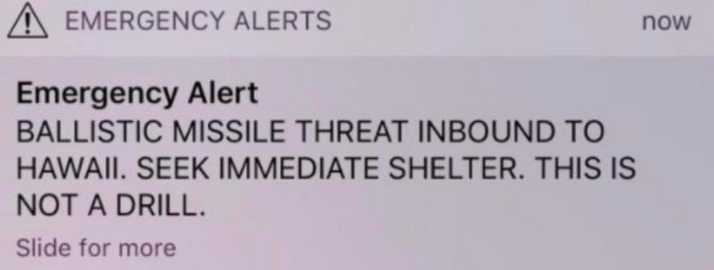False Missile Threat in Hawaii Due to Misunderstanding
In a recent update to this story, the unidentified worker responsible for the false alarm has been fired. According to the The New York Times, a state investigation “found that he had been a “source of concern” for 10 years and had twice before confused drills with real-world events.”
During the wee hours of the morning of January 13, 2018 a message about a looming missile threat to Hawaii was sent out. It said, “BALLISTIC MISSILE THREAT INBOUND TO HAWAII. SEEK IMMEDIATE SHELTER. THIS IS NOT A DRILL.” That went on for about 38 minutes. This false alarm, mixed with heightened tensions with North Korea in the news a lot, created a lot of panic in Hawaii.
After the alert was corrected, officials initially said that a misclick between two option in a drop-down menu was to blame. “Hawaii’s alert software allows users to send live alerts and test alerts using the same interface. To send an alert, employees pick a pre-written message from a drop-down menu, and then click ‘yes’ or ‘no’ when the system asks, ‘Are you sure that you want to send this Alert.’” Explained James Wiley, an attorney-adviser at the FCC’s Public Safety and Homeland Security Bureau.
Then the Federal Communications Commission (FCC) investigated and said that the employee who sent out the alert “claimed to believe… that this was a real emergency, not a drill.”
As was standard procedure, the night-shift supervisor posing as U.S. Pacific Command played a recorded message to emergency workers. It included the phrase, “Exercise, exercise, exercise,” the FCC report said, but it also included, “This is not a drill” which is the language used for real missile threats. The worker responsible for sending the emergency alert said they did not hear the “exercise” part of the message.
To keep such a situation from happening again, the Hawaii Emergency Management Agency implemented a new alert protocol and has fired the employee who sent out the false alert since the mishap. Now, tests and actual missile launch notifications will require activation and verification by two people, and in case there is another mistake, a pre-scripted cancellation command has also been written and can be issued within seconds of an error.





















